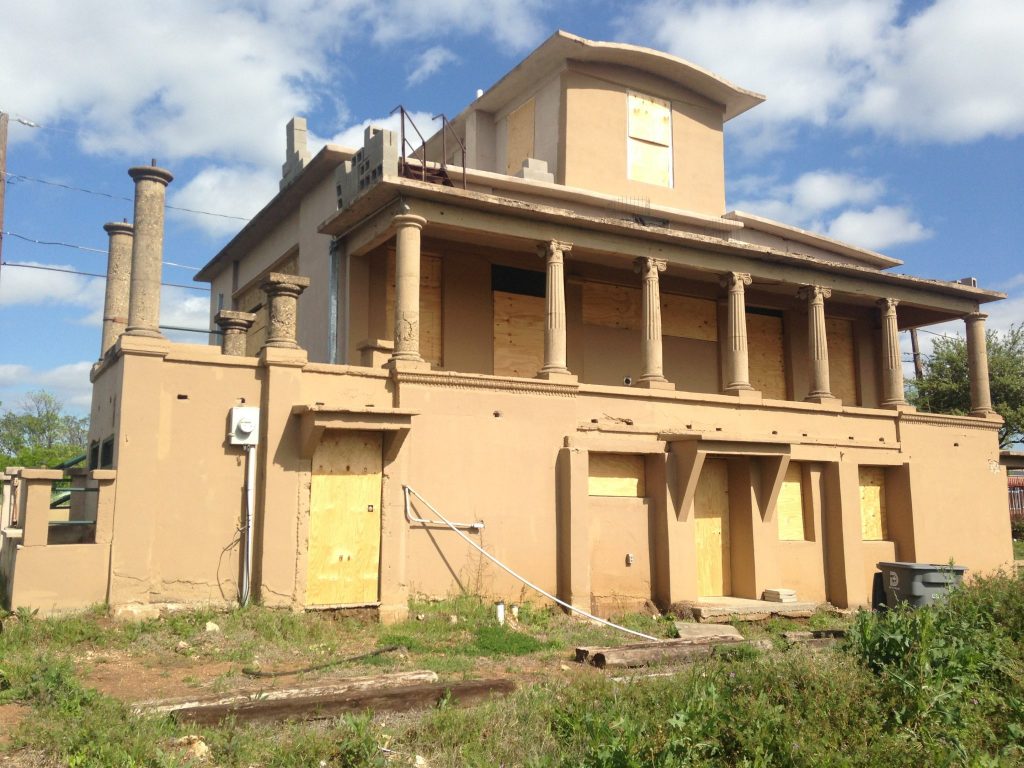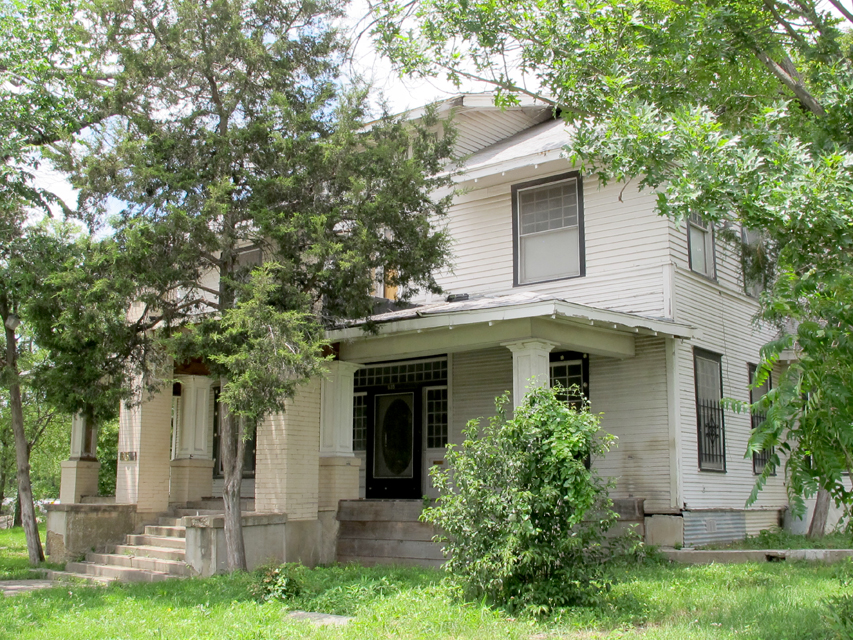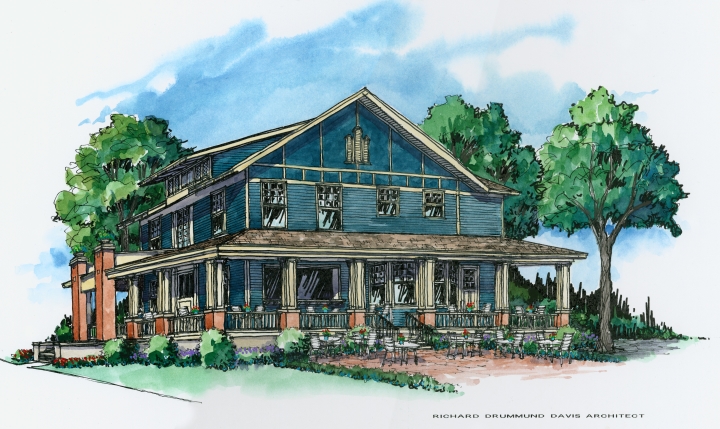
The Kovandovich house at 523 Eads was built in 1914 and can be seen from Interstate 35. It is an early example of poured-in-place concrete construction. Photo courtesy of the Old Oak Cliff Conservation League
With City Council set to vote as soon as this summer on a major rezoning of the 850 acres surrounding Lake Cliff Park, the Old Oak Cliff Conservation League set its sights on the Oak Cliff Gateway for this year’s architecture at risk list.
Five of the ten properties on this year’s list are in the gateway area, including the Oak Cliff Pumping Station, which on the Oak Farms Dairy campus.
The old Polar Bear ice cream stand, now a Mexican restaurant at 1207 N. Zang, makes its second appearance on the list. League past president Michael Amonett discovered that it was built in 1932 as Schell Grill, and it became Polar Bear in 1945. Even though the building is in use, Amonett says it is not protected and could be at risk for demolition.
The Oak Cliff Floral Building at 211 E. Colorado was built in 1938, and the family added an apartment, greenhouse and courtyard. An attorney owns the entire block and told league board member Alicia Quintans that he plans to sell it eventually. He says someone lives in the apartment, but the retail space has been for lease since the flower shop closed about five years ago.
One of the biggest lessons in Oak Cliff history on the list comes from 635 N. Zang, the home of Dallas Mayor George Sergeant, built around 1910.
Sergeant was a world traveler who became known as the “centennial mayor” for bringing the Texas Centennial to Dallas in 1936, when 6 million people attended the 6-month-long State Fair of Texas. Sergeant helped the city win $25 million in WPA contracts to design and build 26 Art Deco buildings at Fair Park, which buoyed the Dallas economy in the middle of the Great Depression.
President Franklin D. Roosevelt and First Lady Eleanor Roosevelt visited the centennial as guests of Sergeant. The Roosevelts supposedly drank lemonade on the front porch of his home.
Jim Lake Cos., the developer largely responsible for making the Bishop Arts District what it is today, owns the building. Amonett says Jim Lake Jr. told him that he would like to turn the house into a restaurant, a rendering of which is below.
The architecture at-risk list, compiled and researched by Amonett, who sits on the Landmark Commission, and Oak Cliff-based architect Quintans, contains countless nuggets of Oak Cliff history, including a fascinating dossier on the cement house at 523 Eads, pictured at the top of this post. Quintans found that Sen. Royce West now owns that property, although the state senator hasn’t said what his plans are for it.
The list also puts into perspective the ongoing struggle between development, progress and preserving our neighborhood history. Spend some time with the full list, which is available at ooccl.org.







